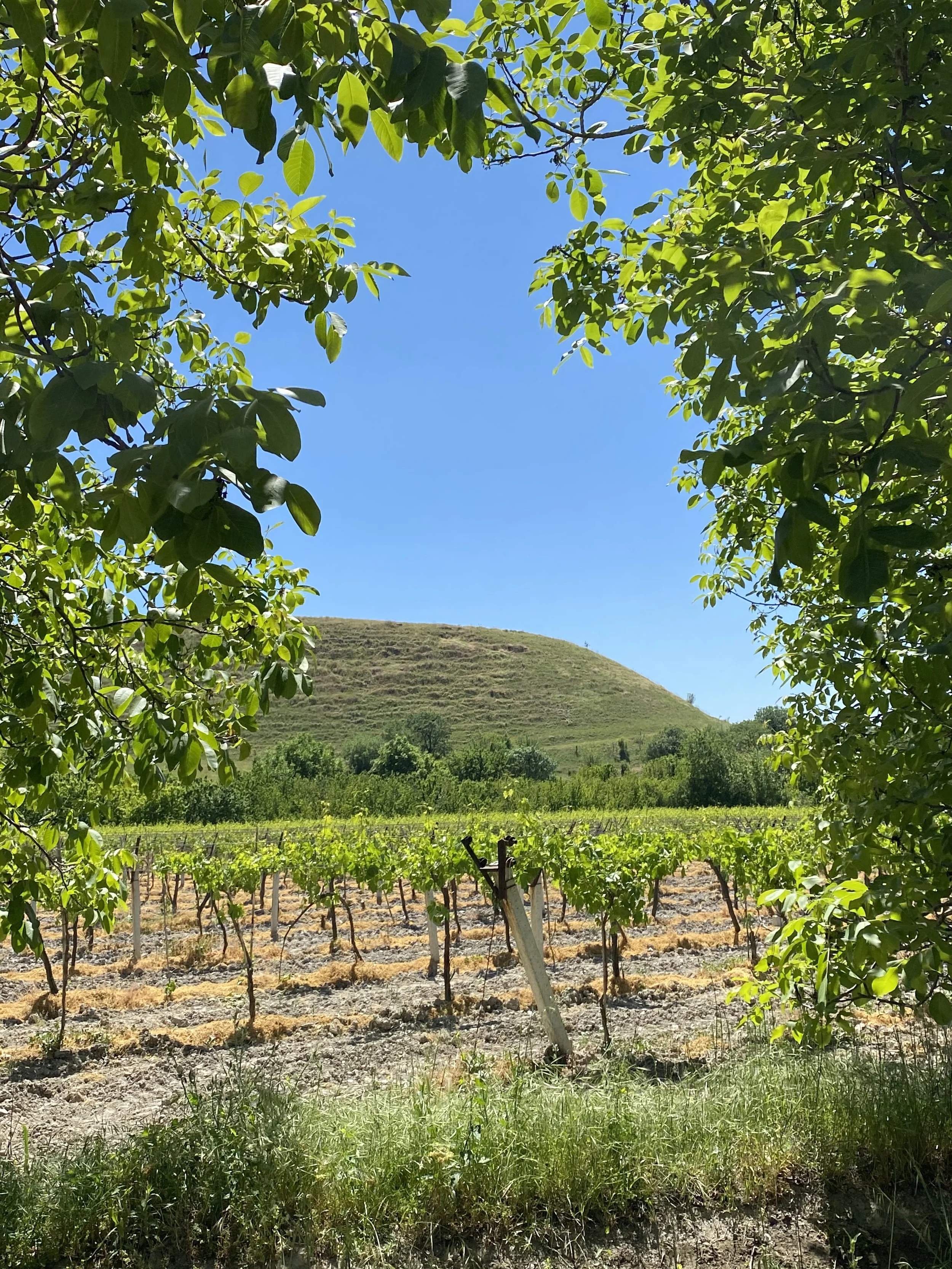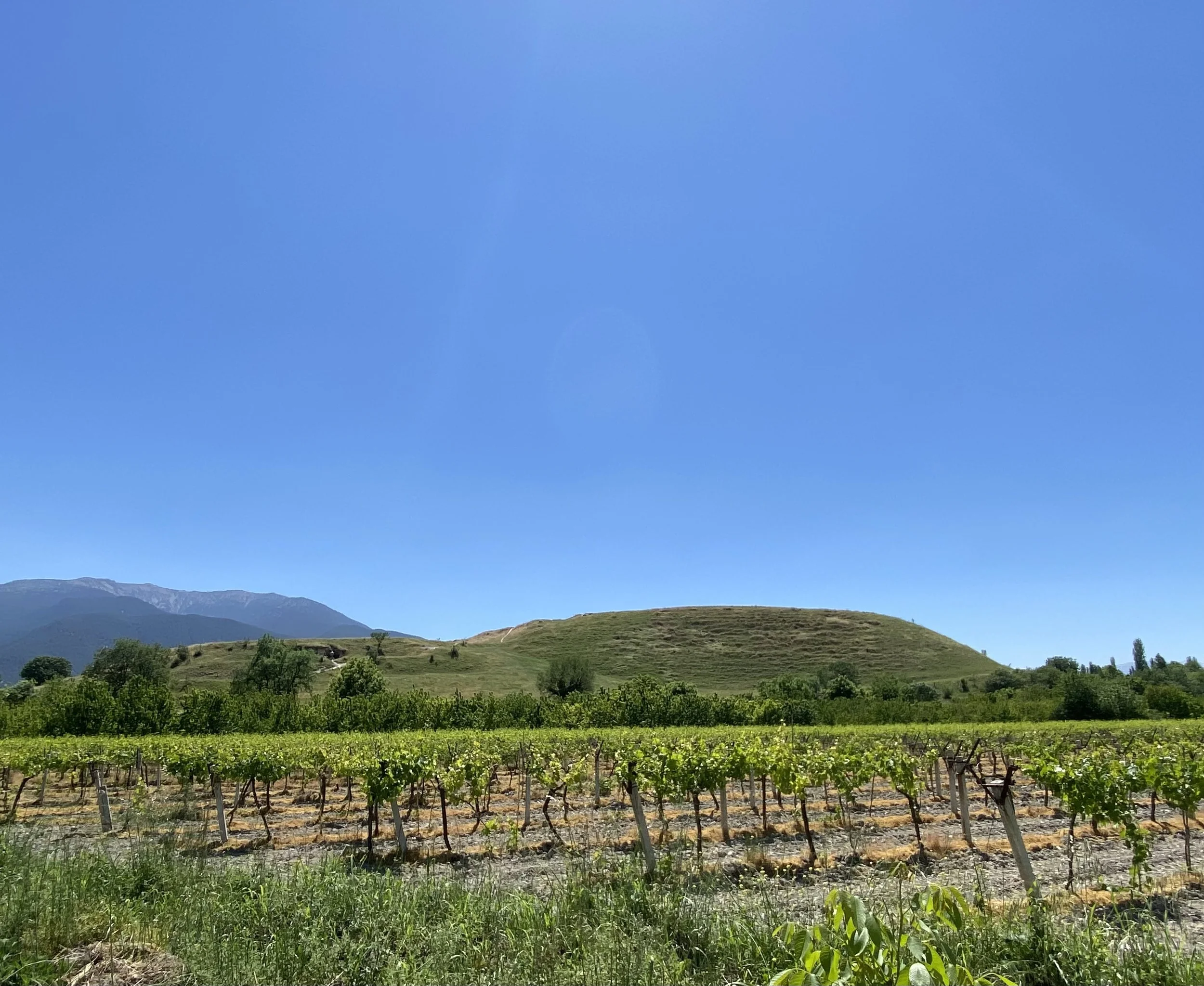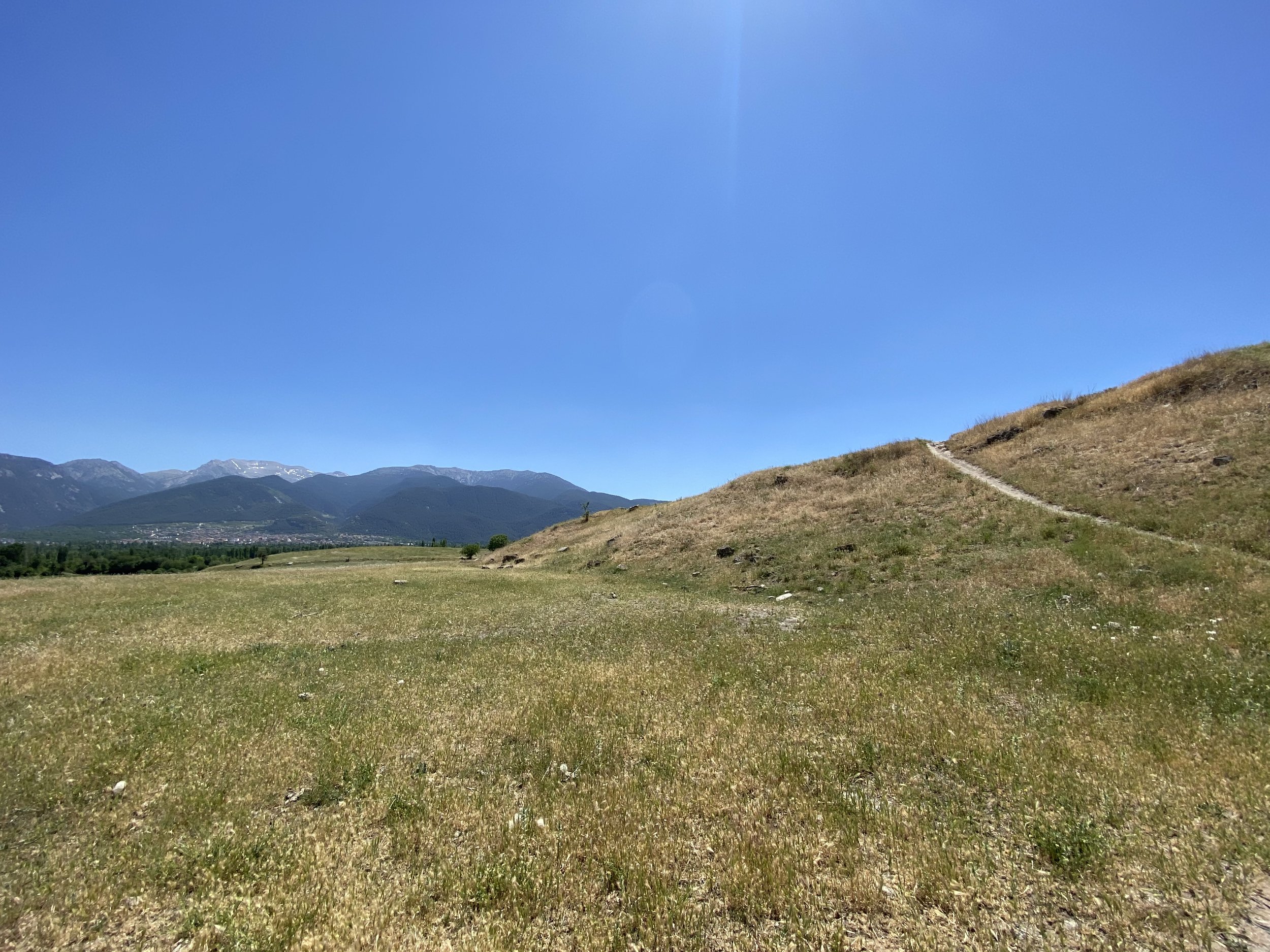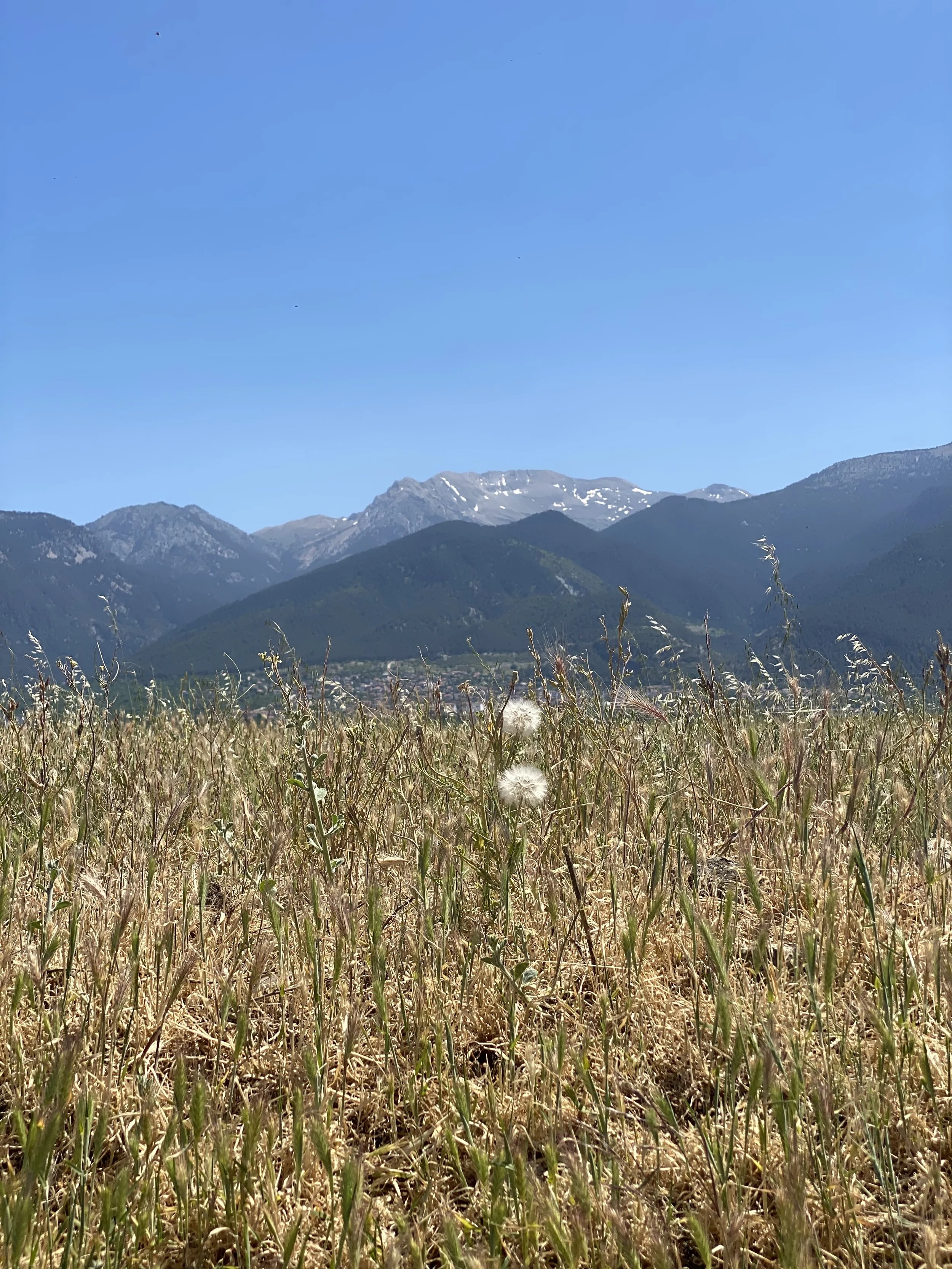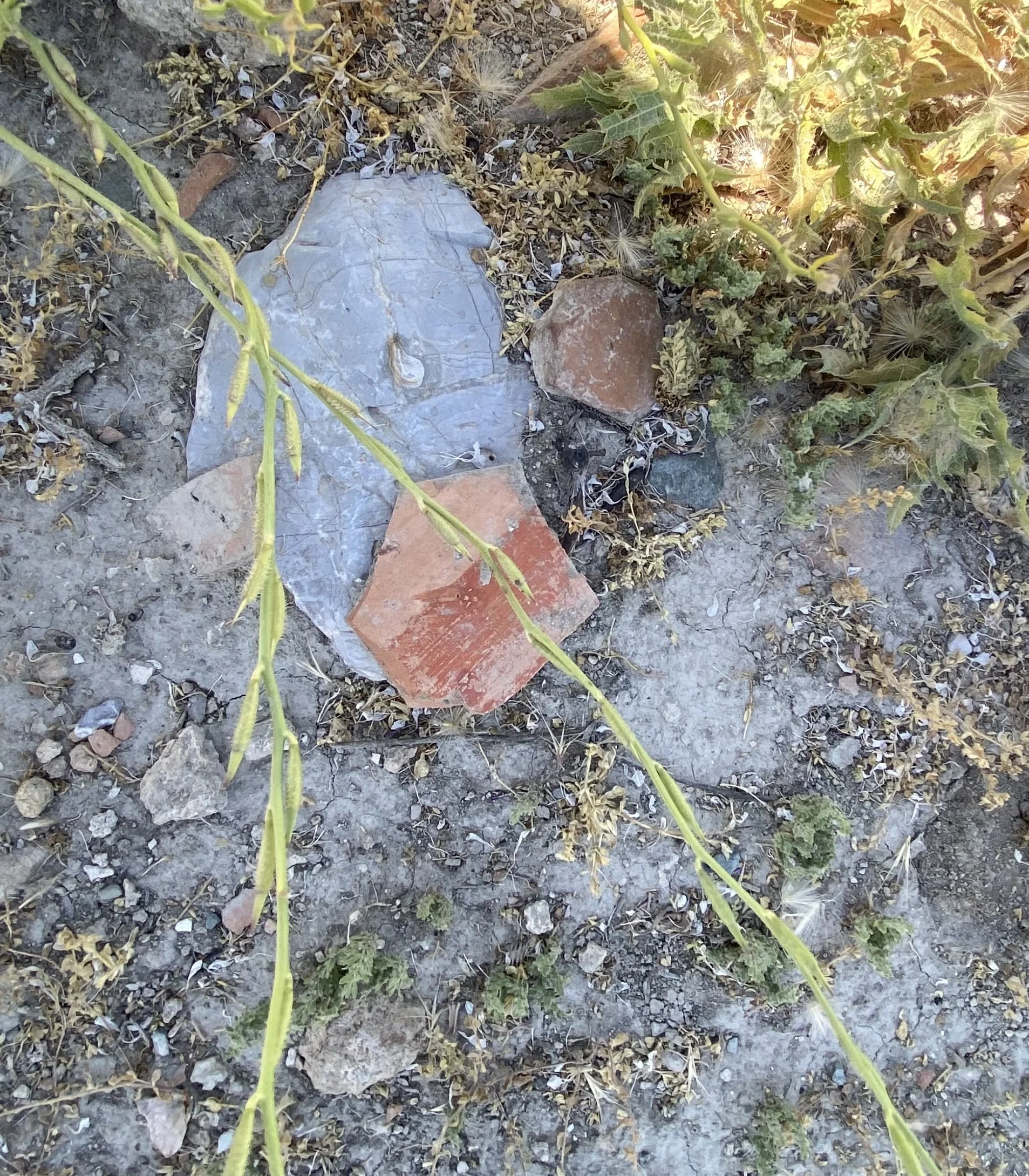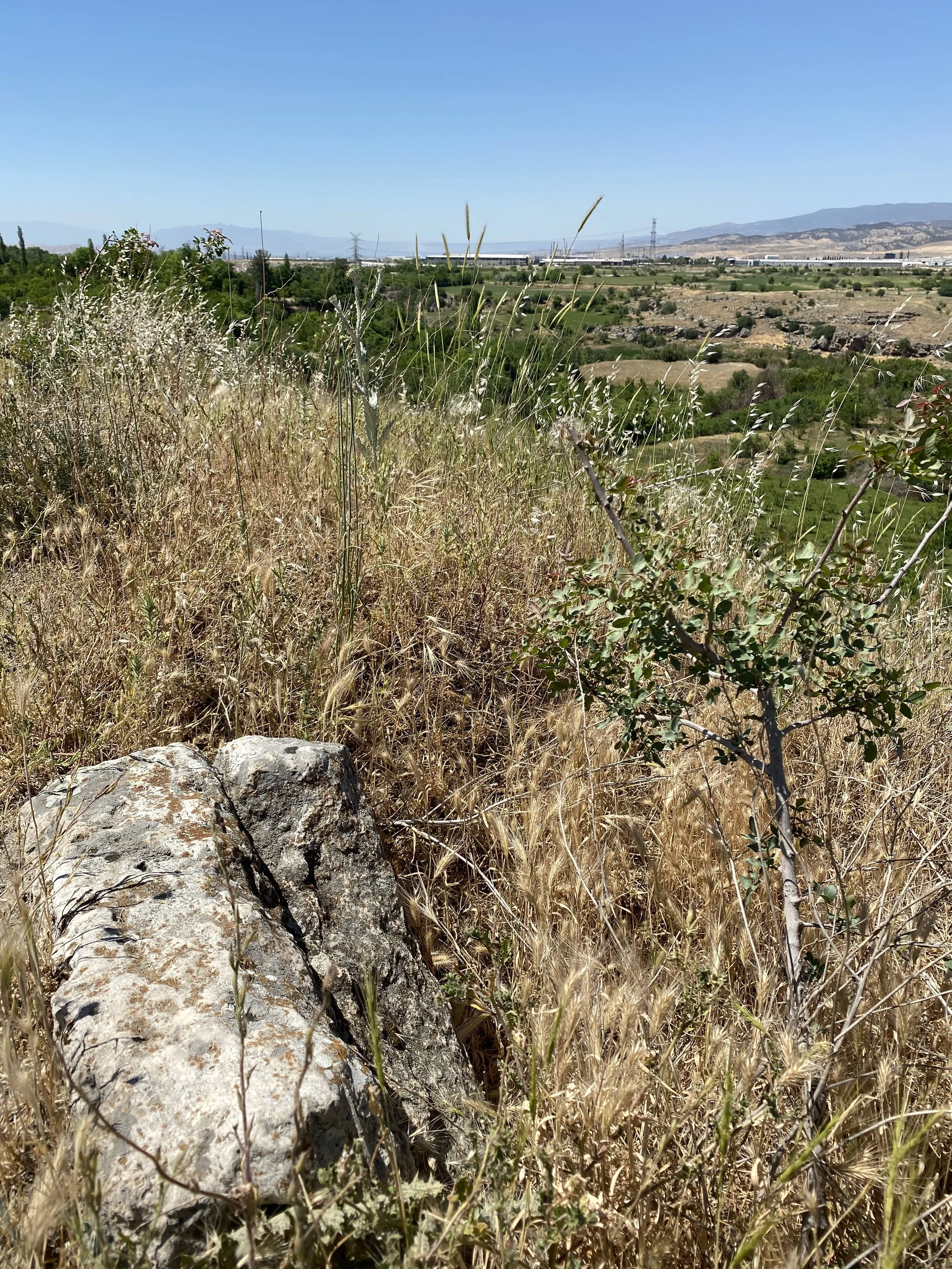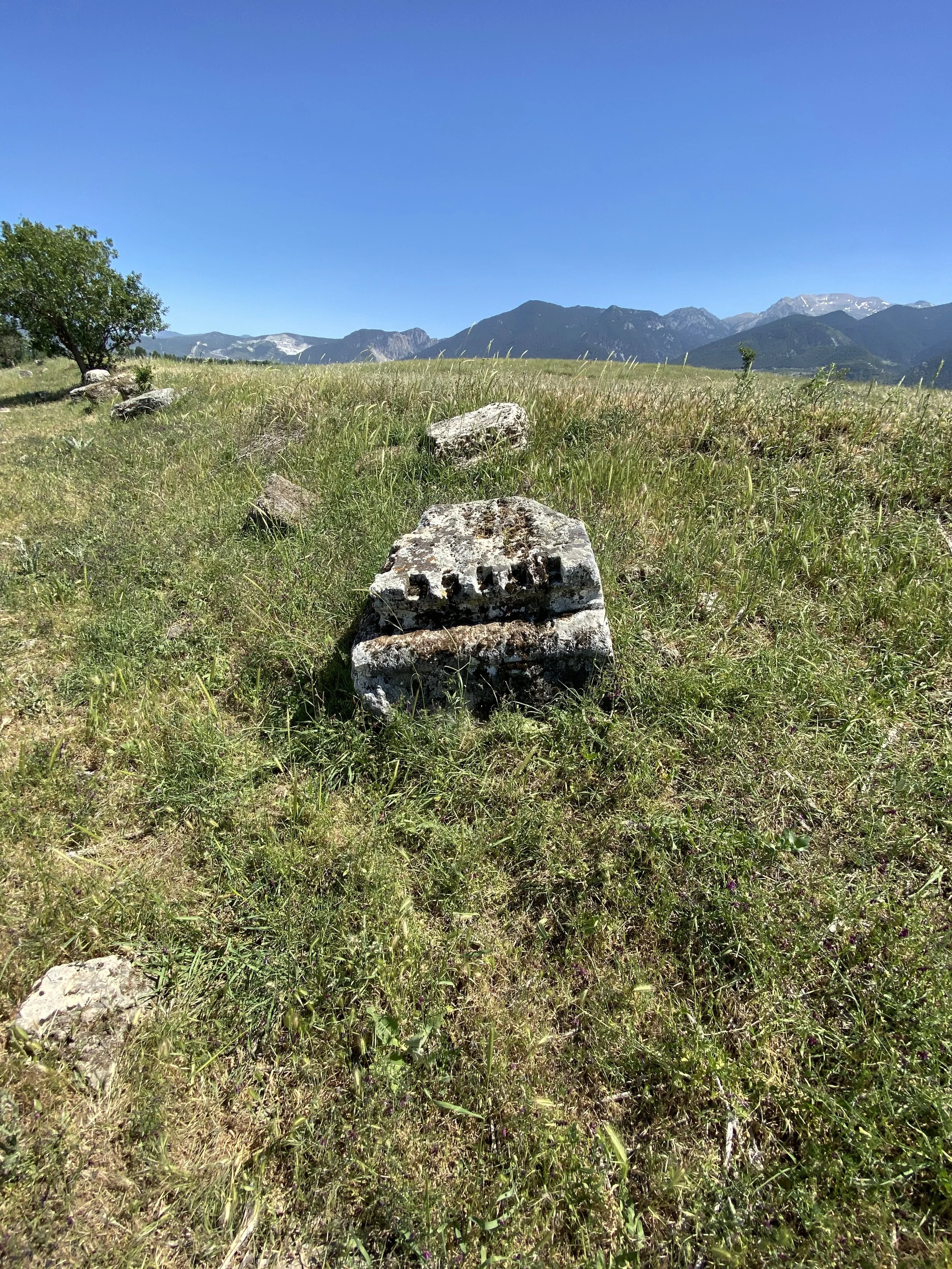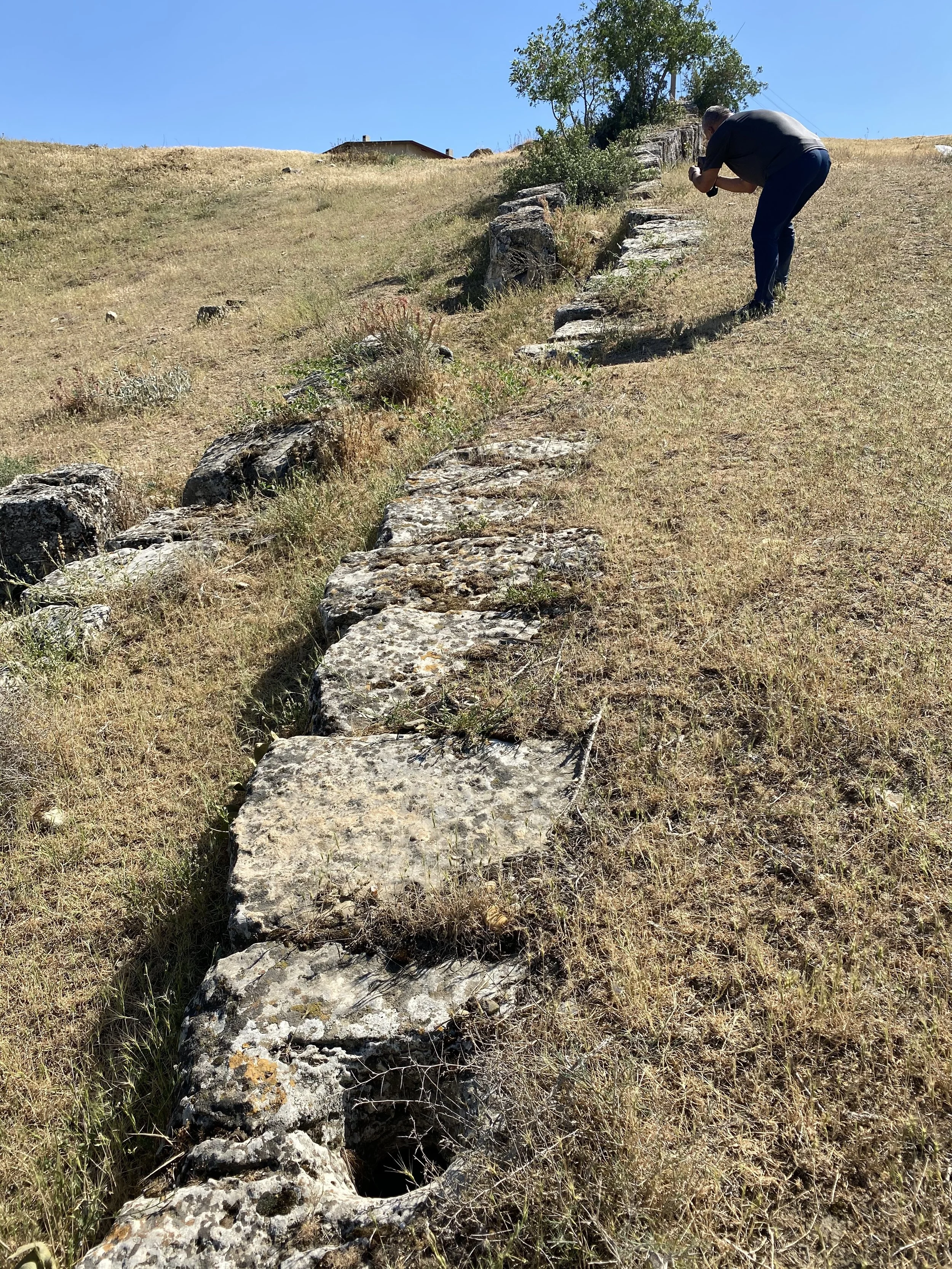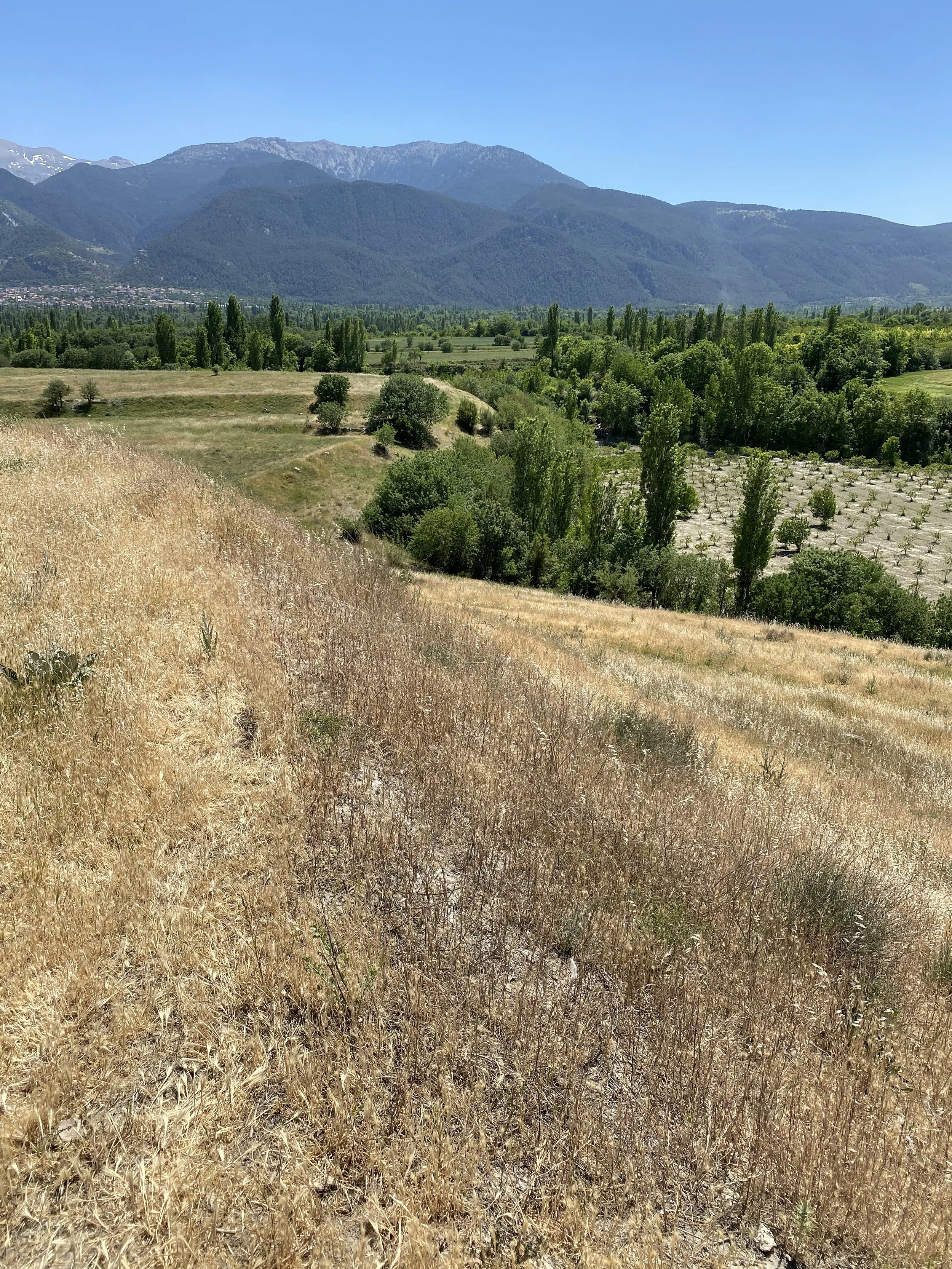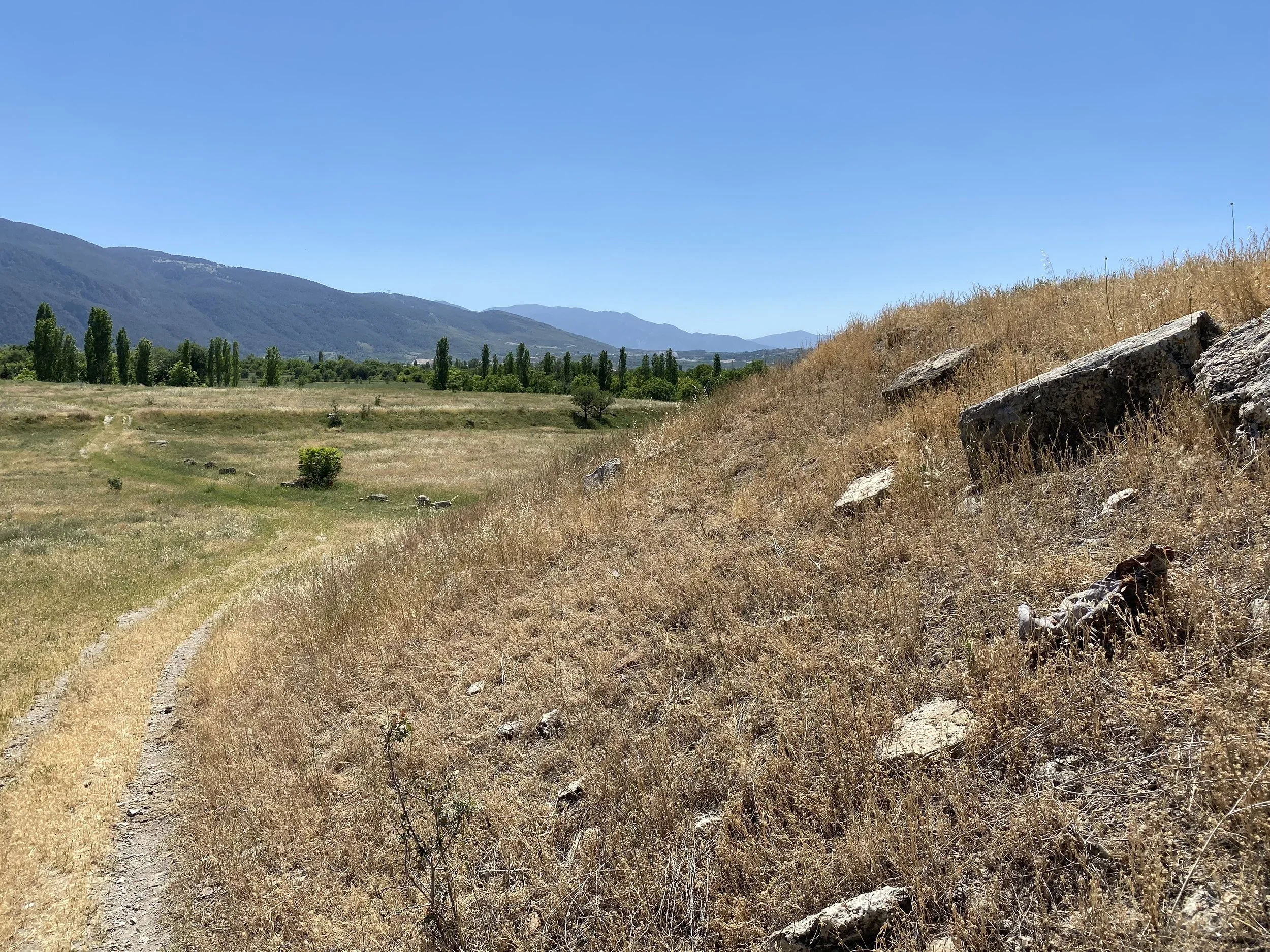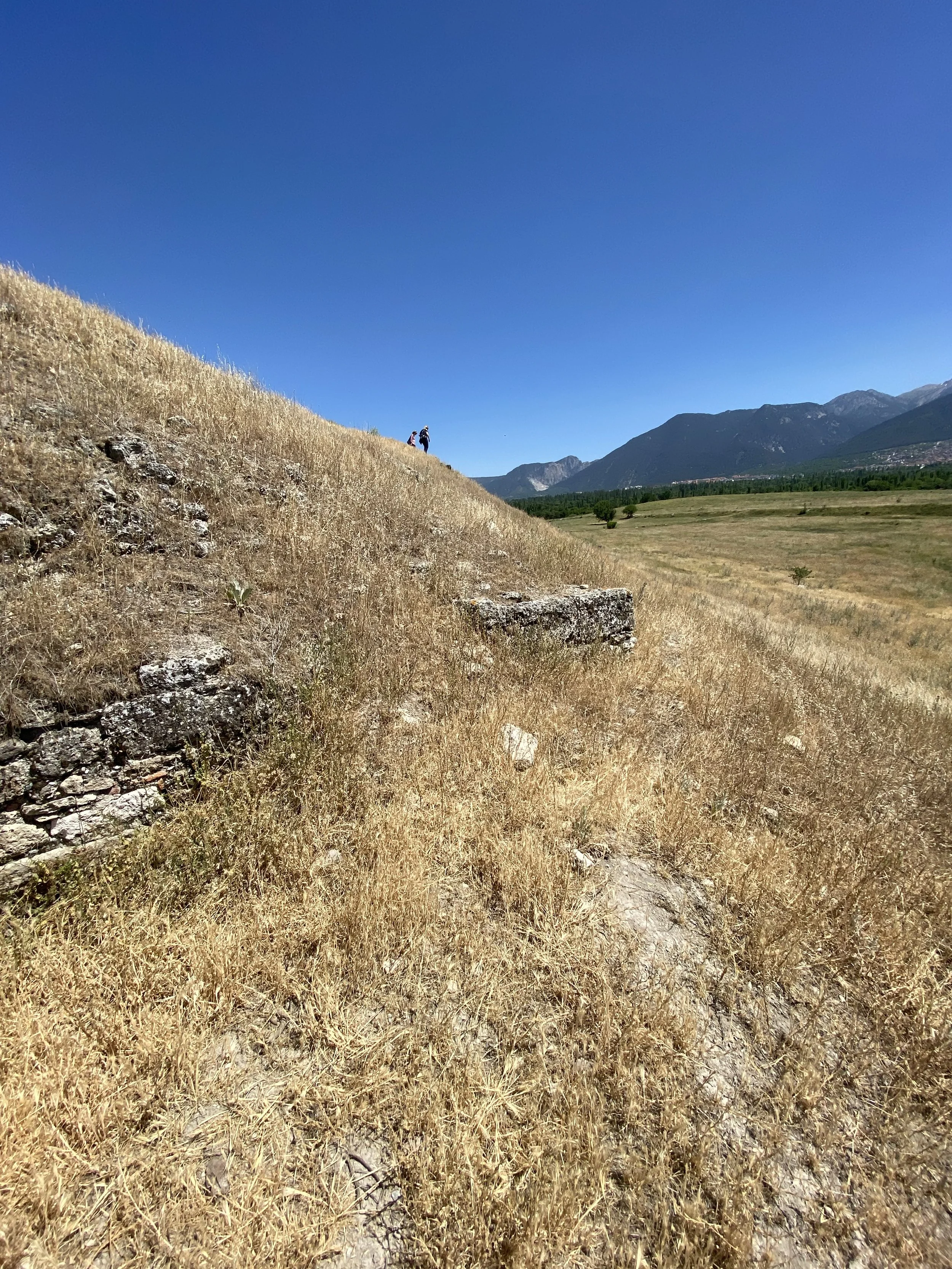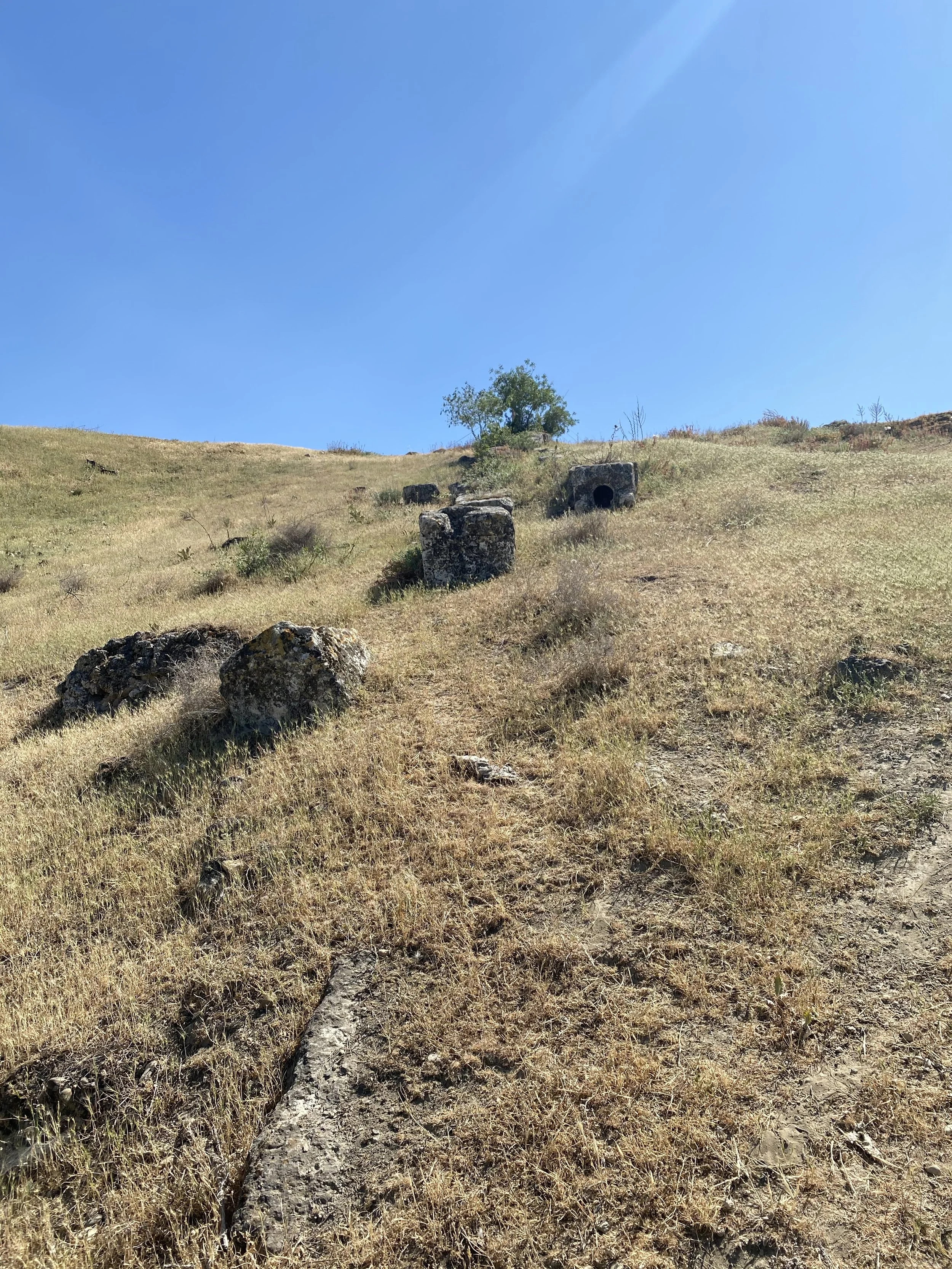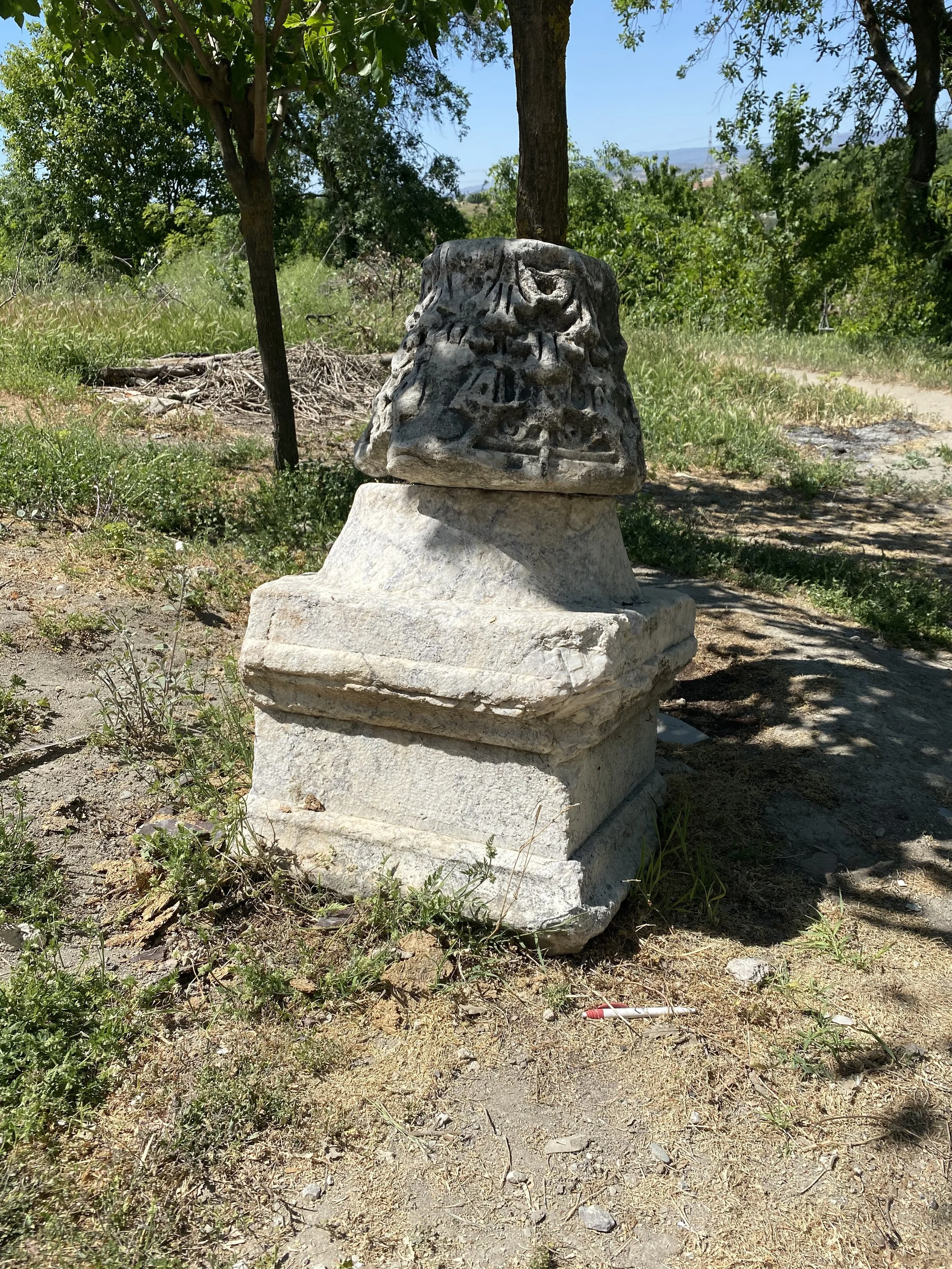Colossae (Honaz, Turkey)
“To the saints and faithful brothers in Christ at Colossae: Grace to you and peace from God our Father”. Colossians 1:2
Colossae is located at the eastern end of the Lycus Valley. In antiquity, it was a pinch point between the mountains of this area of Phyrgia that put it on the road to Ephesus, Sardis and south to the sea. A 2021 surface survey found pottery remains attesting to continuous occupation from the early Chalcolithic period to the time of the Seljuks. In addition, archeology has found over a hundred inscriptions that mention Colossae and coins from Colossae. Around the time of the 1st century BC to 1st century AD, Colossae was eclipsed in importance by nearby Laodicea and Heiropolis. Colossae was severely damaged in the 60 AD earthquake and became a much smaller settlement. Today it is a grassy biconical hill amid orchards and vineyards with the modern city, Honaz, a few miles to the south.
Walking around the acropolis there are a few visible remains (chunks of marble, pipe, pottery sherds, cut stone, the theater cavea). The agricultural fields in the area all have pieces of worked stone lying about. There is an area north of the acropolis, rocky, and less suitable for agriculture where there are over a 100 rock cut tombs, broken tomb caps and some stele memorials. The towns nearby show evidence of material from the ruins of colossae after earthquakes being used in newer construction.
We found it fun to walk around an unexcavated site and try to imagine what it could have been. We were there in 2021, before the surface survey. Looking back at our pictures we are disappointed to see that we took very few pictures of the theater or the tomb area…. Hmmm... must be time to go back :)
Here is a link to a webinar hosted by Tutku Tours and Mark Wilson on the findings of the 2021 surface survey of Colossae: https://youtu.be/G-yn_WuiOXY?si=eU5JM170NPMo86uy
Colossae (Honaz, Turkey)


